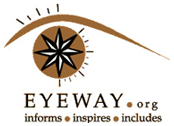‘Ensuring e-learning materials are fully accessible to anyone especially those with physical or learning disabilities’ was the subject of a conference held in London late last year. The invited delegates included senior learning executives from the public, private sectors and educational publisher groups Debates covered the usability and accessibility of e-learning material to people with disabilities.
Speaking at the conference, Sue Garrett, information and communication technology/information learning technology development officer at Britain’s Royal National College for the Blind, said: “Accessibility and usability cannot be divorced.” Garrett was of the opinion that usability should focus on making software, websites, online materials and applications easy for people to use. “Making e-learning accessible to those with disabilities should enhance the experience for all learners,” she added.
Sal Cooke, head of TechDis, an educational advisory service, working across the United Kingdom in the field of accessibility and inclusion, said every situation was different and every accessibility solution was individual. Many factors should be taken into account, such as place, time, teaching resources, staffing, context and emotional state. “The circumstances under which material is delivered affect the way an individual can access it and whether something is ‘accessible’ can only be judged at the point of delivery,” she said.
The conference was organised by global e-learning producer, Tata Interactive Systems.

Facebook comments